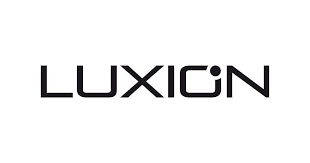Fueling Contemporary Energy Needs: How Gas and Electricity Power Our World
In today’s fast-paced and increasingly technology-driven world, energy consumption is at an all-time high. The demand for power continues to grow, driven by the need to fuel industries, electrify transport, and support billions of homes worldwide. Gas and electricity, the core pillars of modern energy, have become indispensable, propelling us through both industrial and digital revolutions. Understanding how these sources fuel contemporary needs provides insights into the balance we must strike between sustainability, accessibility, and economic viability.
The Evolution of Energy Needs
Energy has always played a foundational role in human development. From the earliest days of burning wood for warmth and cooking, societies progressed to coal, oil, natural gas, and electricity. Each stage in this evolution marks significant shifts in technology, economy, and society. Today, natural gas and electricity are the primary players, each with unique benefits and limitations.
The global energy landscape is primarily characterized by a transition from carbon-intensive sources, like coal, to cleaner alternatives, including natural gas and renewable electricity. This shift is in response to both the environmental toll of fossil fuels and the goal of creating a sustainable, resilient energy future. The United Nations Sustainable Development Goal (SDG) 7 underscores the importance of ensuring “access to affordable, reliable, sustainable, and modern energy for all.” This vision has elevated gas and electricity as the fuel sources of choice to meet rising energy needs.
The Role of Natural Gas in Contemporary Energy
Natural gas has gained traction in recent decades as a cleaner alternative to coal and oil. Comprising mainly methane, it emits fewer greenhouse gases and particulates, making it a more environmentally friendly option. It’s particularly popular in power generation, heating, and as a backup for renewable energy sources. Gas is vital to both households and industries, offering a steady, reliable energy source even in areas with limited infrastructure.
Natural gas has found diverse applications:
- Electricity Generation: Gas-fired power plants are efficient and can be activated quickly, making them ideal for meeting peak electricity demand. They are also less polluting than coal-powered plants, aligning with global climate goals.
- Residential Heating: Many countries depend on natural gas for home heating, especially in colder climates. It’s affordable and accessible, providing comfort and safety to millions.
- Industrial Use: Manufacturing and heavy industries rely on gas for various applications, including steel production, glass manufacturing, and food processing, where high and consistent temperatures are essential.
- Transportation: Compressed Natural Gas (CNG) and Liquefied Natural Gas (LNG) are becoming more popular in the transportation sector, offering a cleaner alternative to diesel and gasoline, especially for fleets of buses and trucks.
As natural gas helps fuel these essential sectors, it also serves as a critical bridge in the energy transition. The flexibility of gas-fired plants complements intermittent renewable sources like wind and solar, offering a backup to balance energy grids.
Electricity: The Heartbeat of the Modern Economy
Electricity is the most versatile form of energy, powering everything from home appliances to advanced medical equipment. It is essential to urbanization, digitalization, and industrialization, and its role is only expected to expand with time. Electricity is often produced by a variety of sources, including fossil fuels, nuclear energy, hydropower, and renewables.
Electricity has transformed every facet of life and business, including:
- Digital Transformation: The rise of digital technology has fueled a surge in electricity demand. From cloud computing to artificial intelligence (AI), tech innovations rely on a steady supply of electricity. Data centers alone, which power the internet, consume about 1% of the world’s electricity.
- Household Necessities: From lighting and refrigeration to entertainment and communication, electricity is integral to everyday life. The growing market for electric vehicles (EVs) further exemplifies electricity’s role in meeting contemporary mobility needs.
- Industrial Efficiency: Advanced machinery and manufacturing processes depend on electricity to improve efficiency and productivity. As automation and smart technologies are adopted, industries need an uninterrupted power supply to ensure streamlined operations.
- Healthcare and Emergency Services: Hospitals, medical labs, and emergency facilities are particularly dependent on a stable electricity supply to operate life-saving equipment. Reliability here can be a matter of life and death, especially during emergencies.
The rise of electricity as the energy of choice for modern applications has accelerated the growth of renewables, as many governments aim to decarbonize power generation. Solar, wind, and hydroelectric power have become essential in the journey to achieve cleaner electricity, though challenges remain in terms of storage, grid stability, and scalability.
Challenges and Innovations in Gas and Electricity
With the growing dependence on gas and electricity, challenges also arise. The traditional energy grid model is under strain as renewable sources are integrated, and both gas and electricity infrastructures require upgrades to meet future demands.
- Energy Storage and Grid Flexibility: One major challenge in the electricity sector is energy storage, particularly for renewables. As wind and solar power production depends on weather and time of day, there’s a need for advanced batteries and grid storage solutions. Innovations in battery technology, such as lithium-ion and solid-state batteries, are evolving to meet this demand.
- Carbon Capture and Utilization (CCU): To address the environmental impact of natural gas, industries are investing in carbon capture technologies. These processes capture carbon emissions before they reach the atmosphere, allowing for their use in industrial applications or safe storage underground.
- Smart Grids and Energy Management: Smart grid technology allows for better management of electricity distribution, offering real-time data and predictive capabilities. This facilitates grid resilience and adaptability to fluctuations in energy demand, paving the way for more efficient and sustainable power systems.
- Renewable Integration and Hybrid Systems: Integrating natural gas with renewables creates hybrid systems that provide reliable power without a heavy environmental footprint. For example, a solar farm backed by a gas plant can ensure continuous energy supply even during cloudy days.
Balancing Affordability, Accessibility, and Sustainability
Gas and electricity are not just critical to energy infrastructure but are also intertwined with economic growth and social well-being. Policymakers, businesses, and energy providers face the challenge of balancing affordability, accessibility, and sustainability. This balance is particularly crucial in developing countries, where affordable and reliable energy can drive significant economic improvements.
- Energy Equity: Nearly 770 million people still lack access to electricity, mainly in Sub-Saharan Africa and parts of Asia. Expanding access to gas and electricity in these regions can enhance living standards, promote education, and drive industrialization.
- Economic Impact: Affordable energy is a key driver of economic growth, enabling businesses to operate efficiently and supporting the creation of jobs. Governments must regulate energy markets carefully, balancing price stability with the need for sustainable development.
- Environmental Considerations: Reducing the carbon footprint of gas and electricity production is essential to combating climate change. While gas is cleaner than coal, it still emits CO₂. Thus, the shift towards renewables in electricity production and innovations in reducing gas emissions are necessary for a sustainable energy future.
The Future of Gas and Electricity
The journey toward a sustainable energy future is complex, but gas and electricity will continue to be pivotal. As technologies evolve, these energy sources will become more efficient, cleaner, and more accessible. Renewables and green innovations are making strides in reducing carbon footprints, but gas and electricity offer an essential stability that new sources alone cannot yet match.
Looking ahead, natural gas and electricity are likely to maintain their dominance in the energy sector. However, the degree of their environmental impact will depend on the global community’s ability to innovate and integrate renewable sources. By addressing the challenges associated with each energy source, we can create a balanced, resilient energy system that not only meets today’s needs but also ensures a livable world for future generations.
Conclusion
Gas and electricity are more than just power sources—they are the lifeblood of modern society, propelling economic development and supporting daily life. As we navigate an era of unprecedented technological advancement and environmental awareness, these energy sources will continue to adapt to meet contemporary demands. By embracing innovation and sustainability, we can ensure that gas and electricity not only fuel our present but also secure our future.





Post Comment